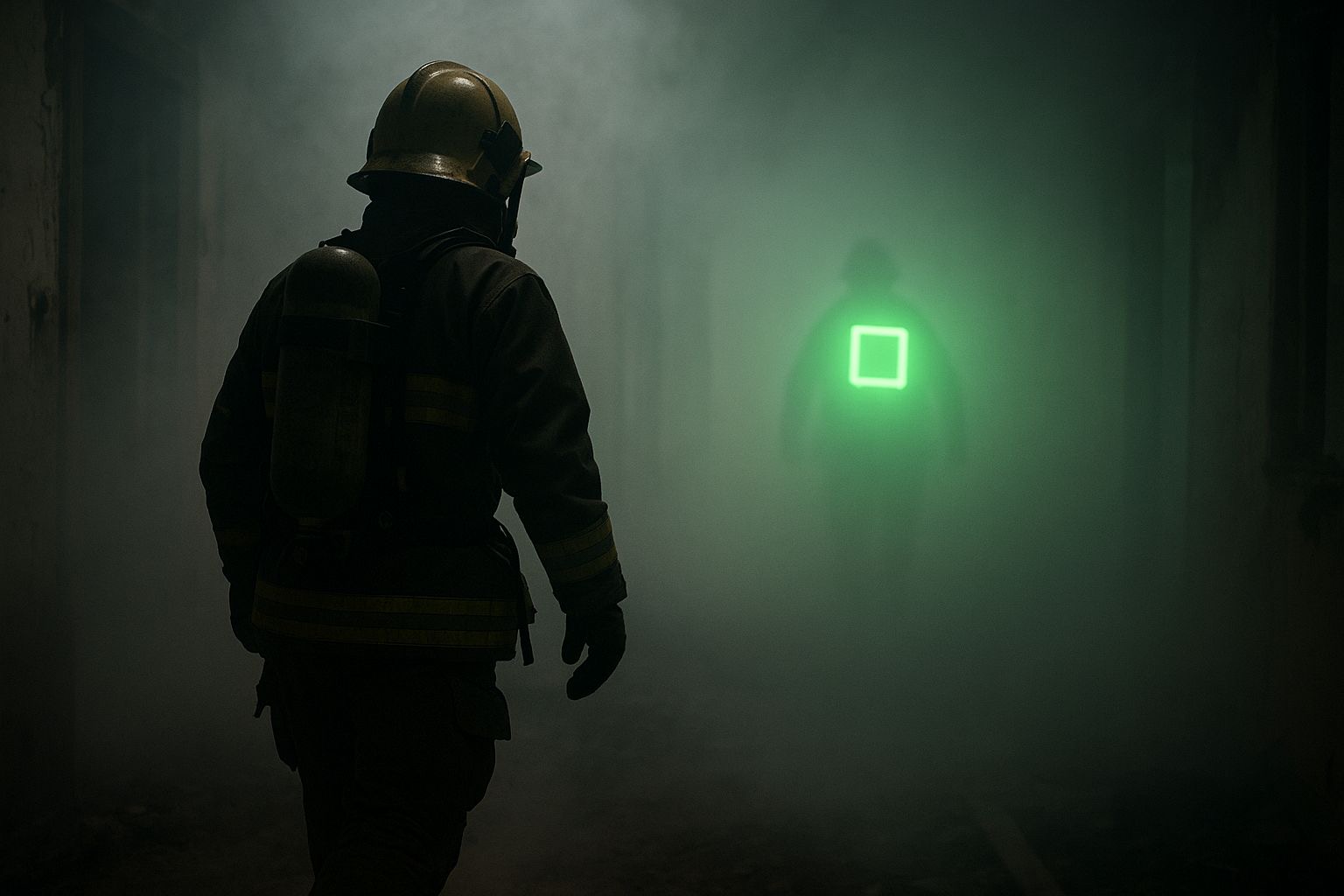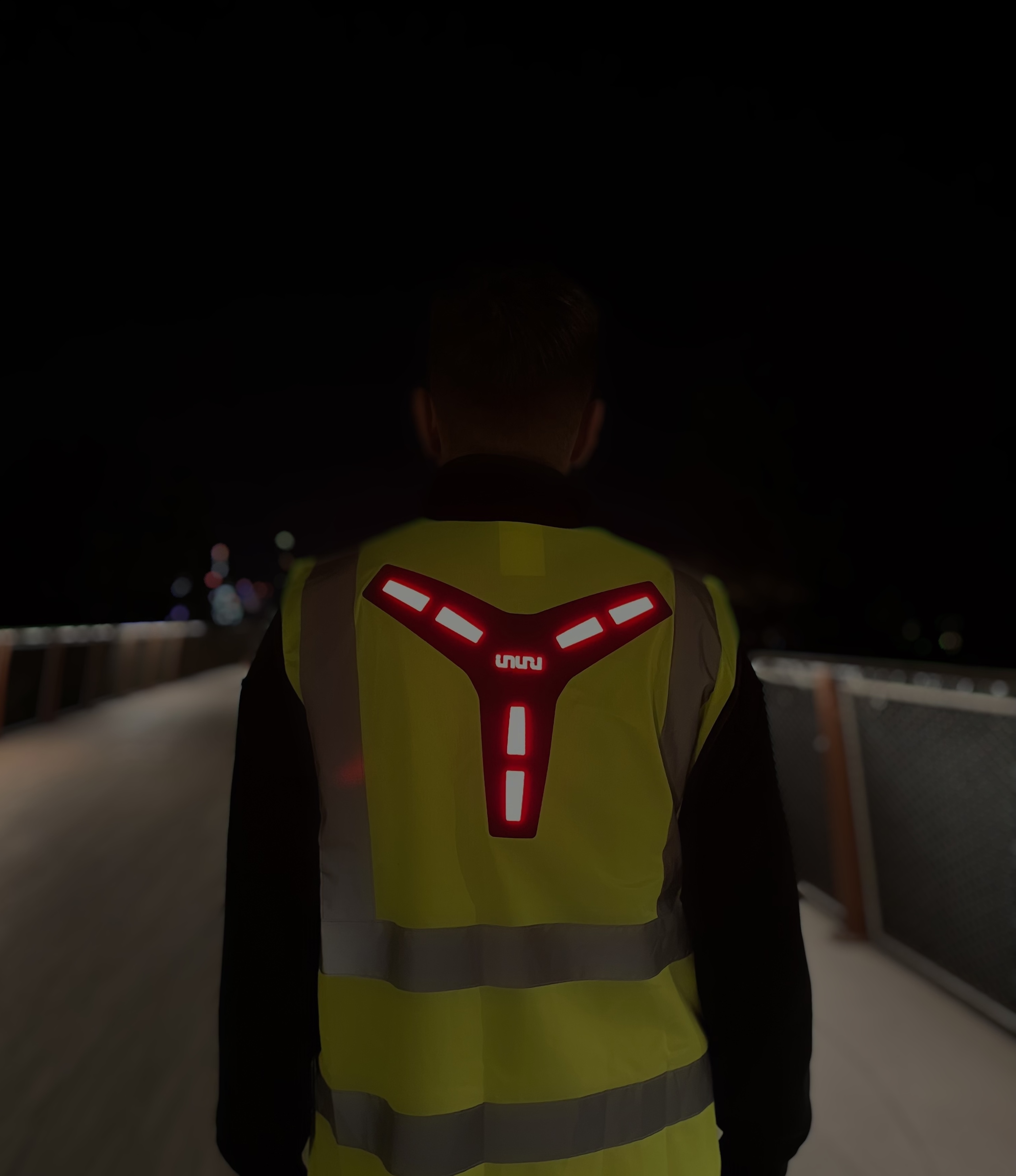The latest innovations in safety wearables and illuminated garments center on ultra-thin printed OLED technology that delivers seamless, energy-efficient light directly within fabrics. These washable, rechargeable (USB-C or NFC) light films can be shaped to any design, ensuring high visibility without bulk. Advancements also include smart textiles that monitor vital signs, adapt to environmental changes, and combine sustainability with durable, long-lasting illumination.
Additional breakthroughs include:
Visibility is critical for preventing injuries and fatalities in low-light environments. According to Eurostat, construction accounted for 22.5% of fatal work accidents in the EU in 2022. Many of these occurred due to limited visibility and poor hazard recognition.
Low visibility is a pervasive issue not just in industrial environments, but also in public safety and transportation. Workers in tunnels, nighttime road crews, and utility personnel operating in dim or obstructed environments often go unseen by drivers or heavy equipment operators until it is too late. The hazard is compounded in foggy or rainy conditions where ambient light is scattered, making reflectors ineffective.
In urban settings, cyclists and delivery drivers are vulnerable due to insufficient street lighting and distracted driving. Pedestrians, especially in regions lacking dedicated walkways or crossings, face similar risks. In fact, in a report from the WHO, road traffic injuries remain one of the top causes of death globally, particularly at night.
In the U.S., pedestrian deaths increased by over 50% from 2009 to 2020. IIHS reports that most of these fatalities happen at night or in low-light conditions. Reflective gear is often not enough—especially in fog, smoke, or poorly lit work zones.
A study from the National Library of Medicine also found that workers wearing active-lighting PPE were 60% more visible to machine operators than those using reflective-only clothing. This highlights the effectiveness of wearable light sources in accident prevention compared to traditional solutions. also found that workers wearing active-lighting PPE were 60% more visible to machine operators than those using reflective-only clothing.
Printed OLEDs (Organic Light-Emitting Diodes) are ultra-thin, flexible light sources printed directly into fabric. Unlike LEDs, they are:
These OLEDs actively emit light, making the wearer visible even without external light sources—ideal for night work, foggy environments, and indoor emergency scenarios.
Inuru is a pioneer in printed OLED technology, developing wearable solutions for police, firefighters, industrial workers, and athletes.
Construction Sites
High-rise workers, tunnel crews, and nighttime operators are often invisible to machinery and other teams. Printed OLEDs embedded in vests or helmets improve detection from long distances.
Firefighters and Rescue Teams
In zero-visibility smoke or dust, OLED-lit patches allow team members to locate each other quickly, reducing response time and disorientation.

Roadside and Emergency Personnel
Police and medics operating near traffic need visibility that isn’t dependent on passing headlights. OLED-lit identifiers (e.g., "POLICE") boost recognition.

Pedestrians, Runners, Cyclists
Athletes and commuters gain consistent visibility in early morning or nighttime hours, even on rural or poorly lit roads.

Airport and Tunnel Workers
Working in enclosed or dim environments increases the risk of accidents. OLEDs enable faster identification and safer navigation.
Urban Workers and Delivery Personnel
Printed OLED patches help cyclists, couriers, and utility staff stay visible in busy urban areas, especially during dusk or dawn.
Under EU Regulation 2016/425, garments with integrated lighting now qualify as Personal Protective Equipment (PPE). This regulation mandates that any item of clothing intended to ensure the wearer's safety must meet specific performance, design, and testing standards. As a result, actively illuminated garments such as those utilizing OLED technology are now recognized as essential safety solutions, rather than optional enhancements.
These garments must:
To further regulate emerging lighting technologies, CEN/TC 162, the European standards committee for protective clothing, is currently developing a new standard: "Warning Clothing with Active Lighting – Requirements and Test Methods". This upcoming framework will:
These developments signal a growing acknowledgment of wearable lighting as an indispensable tool for preventing workplace and roadside accidents. As safety regulations evolve, it's anticipated that active-lighting garments will become mandatory in certain sectors—particularly for nighttime road workers, tunnel operators, airport ground crews, and emergency response teams.
More details can be found through the official CEN roadmap, which outlines the technical work being pursued by Working Group 7 (WG7) of CEN/TC 162.
Additionally, smart PPE initiatives supported by EU-OSHA show a growing trend in real-time monitoring technologies, where garments not only enhance visibility but also interact with surrounding systems to detect risk, issue alerts, or record incident data.
Together, these efforts ensure that actively illuminated garments will be held to the same—or higher—standards as traditional high-visibility clothing, improving both compliance and user protection across all safety-critical fields.
Technical Benefits vs. Traditional Reflective Gear
Printed OLEDs and active-light safety garments are transforming visibility in hazardous environments. Backed by evolving EU standards and a growing body of real-world applications and academic research, these innovations offer unmatched performance in protecting workers, responders, and the public. For industries facing low-light challenges, smart illumination isn’t just a trend—it’s a critical upgrade.
If you're interested in integrating OLED safety solutions into your operations or want to learn more about active lighting for PPE, contact the Inuru team for tailored insights and product information.
SOURCES:
(1)https://ec.europa.eu/eurostat/statistics-explained/index.php?title=Accidents_at_work_statistics
(2)https://www.iihs.org/research-areas/pedestrians-and-bicyclists
(3)https://www.inuru.com/technology
(4)https://eur-lex.europa.eu/legal-content/EN/TXT/?uri=CELEX%3A32016R0425
(5)https://wp2025.cencenelec.eu/sectors-list/health-and-safety/
(6)https://www.iso.org/standard/70932.html
(7)https://osha.europa.eu/en/highlights/smart-digital-systems-tracking-safety-and-health-real-time
(9)https://www.ncbi.nlm.nih.gov/pmc/articles/PMC8205026/